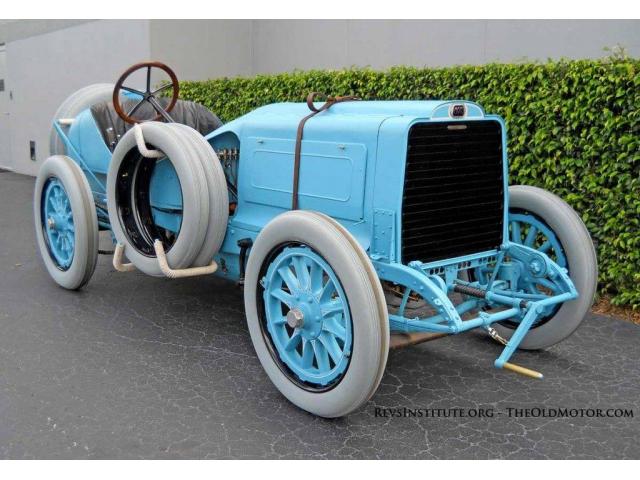1908 Mors Grand Prix Car
- Brand: Mors
1908 Mors Grand Prix Car
Louis Mors and his two sons Emile and Louis were among the many automotive pioneers in France. They first built electric cars in the 1880s and early 1890s. They were captured by the internal combustion engine in 1895 when they raced a Panhard & Levassor in the Paris-Bourdeaux-Paris road race. A year later the first Mors motor car appeared, designed by Henri Brasier along the lines of the original Benz. Within a few years the Mors company built around 10 cars per month. Featuring V4 or flat 2 engines with water and air cooling, these little machines were quite advanced.
The Mors family had not forgotten about racing and had Brasier develop a racing car. Before he left the company in 1901, he oversaw the construction of the Mors 60hp Grand Prix racer. It featured a 10-litre V4 engine with magneto ignition. For 1902 the 60hp was updated and became one of the first cars to be fitted with shock absorbers, which greatly improved the handling. During the 1902 edition of the high profile Paris-Berlin rally, Henri Fournier Mors 60hp lasted just long enough to claim victory. The win brought world fame to Mors and order books quickly filled up.
The departure of Brasier left a big gap that was not filled right away. Mors soon lost their edge and sales dwindled. By 1905 the racing department was closed as the company recorded its first ever loss. In a desperate attempt to regain their market position, several new models were introduced, but it was to no avail. In 1907 Andre Citroën took charge of thevirtually bankrupt company. This Paris born engineer had made a small fortune with a gear-factory and now looked for a new challenge.
Citroën managed to turn Mors' fortunes around and by 1910 the company was profitable again. He also recognised the value of a successful racing program and re-opened the competition department. He developed a brand new racer for the 1908 Grand Prix at Dieppe, which was generally considered the most important race of the season. The rules were not very strict and only dictated a maximum bore of 155 mm and a minimum weight of 1100kg.
Mors' engineers went right to the limit with a bore of 154.8 mm for his four cylinder racing engine. Combined with a stroke of 170 mm this led to a swept displacement of a staggering 12.8 litre. Constructed of two blocks of two cylinders and equipped with a single camshaft, the engine produced a modest 120 bhp at 1200 rpm. The massive engine was installed in a simple ladder frame with conventional live axle suspension. Although capable of speeds of over 150 km/h, the Mors Grand Prix was equiped with just two tiny drum brakes on the rear axle.
Three cars were constructed and two were entered for Camille Jenatzy and "Landon". They faced strong competition from the likes of Mercedes, Fiat, Benz, Opel and Panhard & Levassor. While the two Mors Grand Prix cars were among the loudest and most spectacular machines on the grid, they failed to make an impression. The two cars finished 16th and 17th, over 90 minutes behind the winning Mercedes. At the end of the season, the rules for Grand Prix racing were drastically changed and the the three massive machines never raced again.
In 1914 Citroën commissioned the development of a new Mors racing car, but the project was sidelined for obvious reasons. Mors would not race again, making the 1908 Grand Prix the company's very last race. Under Citroën's leadership the company continued to produce cars until 1925 and continued on as a parts manufacturer for another 30 years. In 1919 Citroën had also begun producing cars under his own name and continued to do so until his untimely death in 1935.
This Mors Grand Prix was driven by the legendary Camille Jenatzy, better known as Le Diable Rouge or The Red Devil for his red beard. He was also the first man to break the 100 km/h barrier. In the 1908 French Grand Prix, however, he could do no better than 16th with the big Mors. A very rare survivor from that famous race, the Mors Grand Prix is today part of the Revs Institute collection in Naples, Florida. Beautifully restored, it was brought out to the 2007 Pebble Beach Concours d'Elegance for a special over 10-litre class. In 2008, it was brought over to the Goodwood Festival of Speed to celebrate the 100th anniversary of the 1908 French Grand Prix.
Descriptions and pictures by bonhams & flickr
| Specification | |
| Production Start | 1908 |
| Country of origin | France |




































